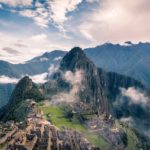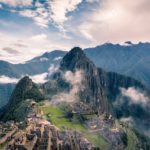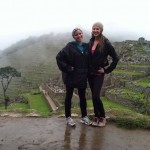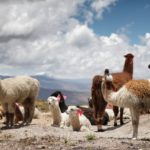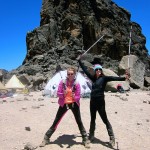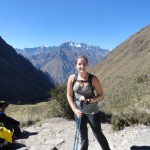Miracles in the Shape of Mountains at Macchu Picchu
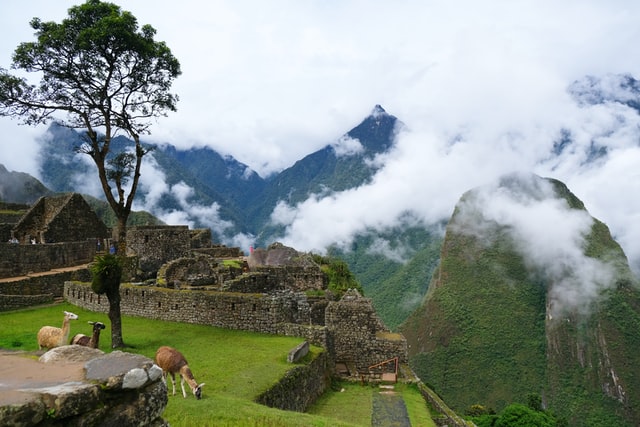
My trip to Macchu Picchu taught me that miracles can be carved into mountains. In November 2017 I embarked on an 8-day hiking and cultural adventure to the Sacred Valley in south-central Peru, deep in the Andes Mountains, and the heartland of the erstwhile Inca empire. After a brief stop in Lima, I arrived in Cuzco, a cloud-top UNESCO world heritage-listed city in the Sacred Valley.
November is the start of summer Peru. This meant cool mornings and evenings, and pleasant days. The rains had not yet begun and I was lucky – it rarely rained at all during my 8 days in Peru.
On day 6, I boarded a train in Ollyantambo that was to take me to Machu Picchu, one of the most famous ancient ruins in the world and Peru’s #1 tourist attraction. Truthfully, I had not spent a great deal of time researching Macchu Piccu before my trip. I had seen the pictures and I just knew that I wanted to go, but I had few expectations. Many surprises awaited me.
What awaited me as I sat on that bus was beyond anything I could have imagined.
I didn’t know that Macchu Picchu, unlike the nearby cities of Cuzco and Urubamba, is located in a tropical mountain jungle. As the train slid through the Andes, the rocky landscape became more lush and green. On arrival at Macchu Picchu town (aka Agua Calientes, named for nearby hot springs), I could feel the humidity as I walked through handicraft stalls to get to my hotel. Macchu Picchu town is not accessible by road; you either take a train to get there, or hike. The town itself was bustling with tourists and kitschy souvenir shops, yet charming nonetheless.
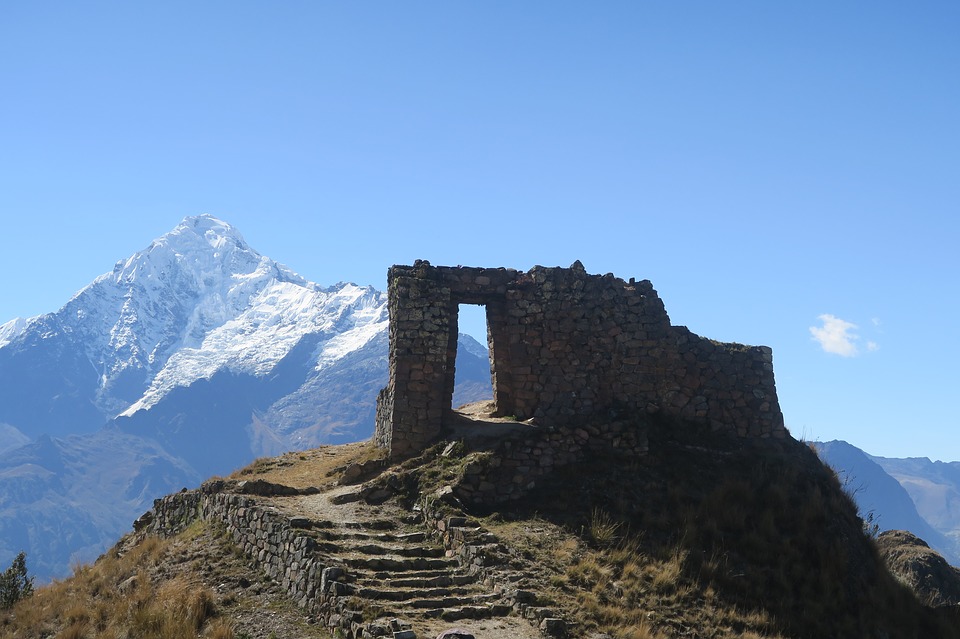
The Macchu Picchu ruins are located at 8,000 feet. From the town, there are two ways to get to the ruins – by hiking up the mountain, or by bus. Buses run every few minutes from dawn to 4 pm. After checking into my hotel, I boarded the bus that takes passengers up a winding road with no shoulder and a sharp drop-off, a 20-minute trip. The views from the bus were magnificent. I have never seen such living, breathing mountains this large and so close.
What awaited me as I sat on that bus was beyond anything I could have imagined. On arrival at the park, I disembarked and entered the gates. I then traversed a series of ancient brick stairways. In the hot sun, the steps seemed to go on endlessly, with many corners and turns. Even though it was only midday, I was tired after several days of hiking. I trudged on, completely unaware of the splendor that awaited me.
The Incas carved then smoothed their stones so they interlocked flawlessly like a jigsaw puzzle, to withstand earthquakes, erosion, and time.
After about 15 minutes, the stairs came to an end. I found myself on a grassy landing. I walked forward – and there in front of me, lay a miracle.
The ancient citadel sprawled below on the edge of the mountain. Temples, chambers, plazas, terraces and stairways that comprise this “lost city of the Incas” glittered in the afternoon sun. Looming behind the citadel was Huayna Picchu, the iconic mountain that is another 8,000 feet high.
I spent the rest of the afternoon exploring the citadel. Listening to my guide, I learned the history behind it. The Incas built Macchu Picchu in the 1400s, likely for a royal family. To this day, archeologists do not know how the Incas were able to collect and transport the stones through the jungle and up into the mountains.
At the time, they did not have wheeled methods of transport. The architecture and intricacy of the stonework are awe-inspiring in their detail and perfection. The Incas were known to build structures without the use of mortar. Instead, they carved then smoothed their stones so they interlocked flawlessly like a jigsaw puzzle, to withstand earthquakes, erosion, and time.
I followed my tour guide through the various compartments of the citadel – the Caretaker’s Hut, the fountains, the Sun Temple, the Royal Apartments, the Funerary Rock – as she elaborated on their architectural features, including how they aligned with the cosmic space. Many of the structures in Macchu Picchu once served as astrological observatories.
My attention never shifted from the majesty of my surroundings as I moved from chamber to chamber, terrace to terrace, plaza to plaza. Every transition required ascending and/or descending ancient stairs. Every corner I turned, I arrived at a more breathtaking view of the mountains, the clouds and the valley below.
There was a reason that life had led me there, and allowed me to be surrounded by the regal beauty of this ancient city and its noble mountainside protectorate.
But it was the mountains that captivated me. They embraced the citadel, acting as ramparts of sorts to protect Macchu Picchu – carved so beautifully and remotely into the mountains that the Spaniards never found it. The royal messengers, bringing news from the surrounding towns via the Inca Trial, warned the inhabitants of the Spanish conquistadores who had invaded and conquered Peru, destroying their cities and temples. In an effort at self-preservation and (wrongly) anticipating an impending invasion, the people of Macchu Picchu fled in the 16th century and disappeared into the surrounding jungle, leaving Macchu Picchu untouched and undiscovered again until 1911. By that time, it had been overgrown by jungle vegetation.
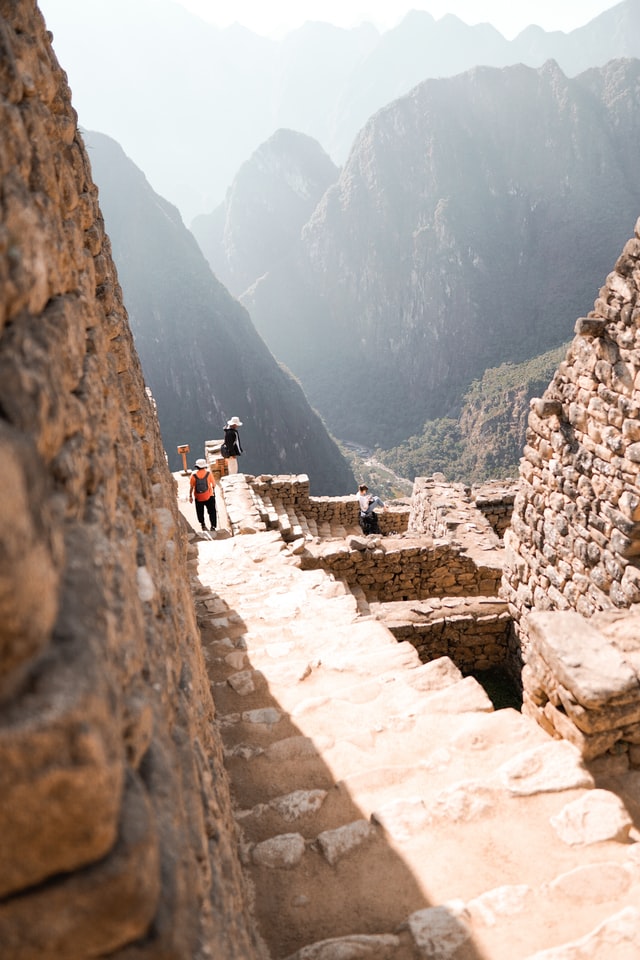
The fact that 500 years ago, a community was able to craft an intricate architectural marvel on top of and within a mountaintop jungle – one that has withstood the centuries so that I may witness it today — was and is a miracle. This thought consumed me that afternoon, as I wandered the ruins, until sunset.
The next day, I rose before the sun and made my way to the bus stop in town. This time, when I arrived at the mountainside landing, the citadel was bathed in a cloudy mist. The peaks of the ruins were visible through the tufts of mist, and the towering Huayna Picchu was hidden. The views were indescribable, and distinctly different from the day before. For an hour, I watched as the sun slowly made its appearance over the mountains and Huayna Picchu, and sparkled over the citadel once again.
On this day, I hiked. A rocky but well-defined pathway slightly north of the citadel, called Inka Gate (not to be confused with the Inca Trail), runs along the edge of the Macchu Picchu mountain.
On this day, I hiked. A rocky but well-defined pathway slightly north of the citadel, called Inka Gate (not to be confused with the Inca Trail), runs along the edge of the Macchu Picchu mountain. The ledge has such a steep drop-off that you have to sign-in before entering the trail, so that the park knows when – and if – you come back. This part of Macchu Picchu is still relatively overgrown with jungle-like vegetation.
The Inka Gate took me about an hour, and it was relatively flat. By contrast, Huayna Picchu is almost entirely vertical, with few if any protective ropes along its ledge. I chose not to hike Huayna Picchu and instead headed in the opposite direction to the Sun Gate trail. This path is broader and has a gradual incline, with amazing views of the canyon below along the route.
It took me about 1.5 hours to reach the Sun Gate, which is also the entrance to Macchu Picchu for those who arrive via the Inca Trail – and where dispatchers from the 16th century arrived to forewarn Macchu Picchu’s inhabitants of the approaching Spanish invaders.
Mountains at Macchu Picchu.
The Sun Gate itself consists of architectural terraces built into the mountainside, where you can sit after a long hike, cool off, and take in the views of the Macchu Picchu citadel and Huayna Picchu in the distance, and the canyon and Urubamba River below.
Later, on the train back to Ollyantambo, I pondered over the ultimate miracle, the real “takeaway” from my time in Macchu Picchu. It wasn’t just that the glorious mountains had protected Macchu Picchu all these centuries, or that the magnificence of Macchu Picchu itself was such a testament to the powers of human imagination and engineering over 500 years ago. For me, there was a reason that life had led me there, and allowed me to be surrounded by the regal beauty of this ancient city and its noble mountainside protectorate.
In those two days, when I was overcome by the magic spell of the mountains and Macchu Picchu, I experienced joy entirely in the moment, allowing my own wounds from the past to appear miniscule and slip away. That was the miracle of Macchu Picchu.
Photos for Mountains at Macchu Picchu by Pixabay and Unsplash.

